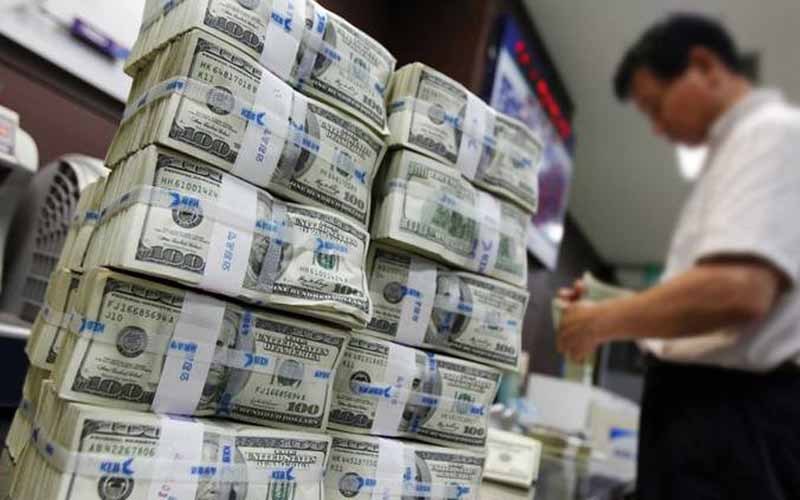The Silent Landing… The Hidden Factors That Led to the Dollar’s Fall in Baghdad
 May 2025 witnessed one of the most exceptional periods of volatility in the US dollar exchange rate against the Iraqi dinar. The dollar’s value declined gradually and dramatically, sparking a wave of questions in the market and prompting experts to deconstruct the reasons behind this sudden shift.
May 2025 witnessed one of the most exceptional periods of volatility in the US dollar exchange rate against the Iraqi dinar. The dollar’s value declined gradually and dramatically, sparking a wave of questions in the market and prompting experts to deconstruct the reasons behind this sudden shift.
In this context, Nawar Al-Saadi, a professor of economics at Cihan University in Duhok Governorate, presented a detailed analysis of this decline to Baghdad on Tuesday (May 27, 2025), explaining that the phenomenon cannot be attributed to a single cause, but rather is the result of a combination of monetary, commercial, behavioral, and even regional political factors.
The market is saturated with dollars. Where did the surplus come from?
Al-Saadi says that the most notable thing is that “the supply of dollars has become higher than usual, but not because of the increase in oil revenues, as is believed, but rather as a result of other factors, most notably the increase in remittances from foreign companies and non-oil investments, in addition to reverse dollar smuggling operations from neighboring countries facing a shortage of hard currency.”
This “temporary flood” of dollars, as he described it, created a state of saturation in the Iraqi market, making the dollar more available than demand, thus driving its price down.
Citizen behavior has changed. Has the dollar lost its place in savings?
But the situation isn’t solely explained by the traditional supply and demand equation, but also by people’s behavior, as Al-Saadi explains, adding that “Iraqi citizens are beginning to lose confidence in the dollar as a savings instrument, not because it is weak globally, but because the dinar has begun to show stability and tangible gains.”
This shift prompted many to sell their dollars and convert them into dinars or gold, which contributed to increasing the supply of dollars and reducing demand for them, thus indirectly supporting the dinar.
The Central Bank intervenes… and absorbs liquidity
Al-Saadi believes that “the Central Bank of Iraq’s policy played a pivotal role in the situation,” explaining that the monetary institution reduced the money supply by more than 6 trillion dinars in just a few months, a move that falls within what is known as “liquidity absorption.”
This policy, according to his analysis, led to a reduction in the amount of dinars available in the market, which increased its value against the dollar and created a deflationary environment that helped control inflation and boost citizens’ confidence in the local currency.
Imports shrink… and the trade map changes
According to Al-Saadi, a significant part of the exchange rate decline is also linked to a decline in imports from some major countries, such as India, Turkey, and the United States, despite a notable exception in imports from China. This decline can be explained either by a decline in domestic consumption or by a reshuffling of spending priorities.
In both cases, demand for the dollar used to pay for imports declines, creating a relative surplus in the domestic market and putting downward pressure on the price.
Behind-the-scenes negotiations: Has demand for the dollar declined in Iranian trade?
What’s striking about Al-Saadi’s reading is his analysis of what he calls the “silent regional factor,” suggesting the possibility of unannounced negotiations between Tehran and Washington that have eased financial restrictions, leading to a decline in the need for dollars in some informal trade (between Iraq and Iran).
This decline, he said, reduced demand for hard currency, which was used to finance shadowy and opaque activities, which was reflected in the local market, resulting in an abundance of dollars and a decline in their value.
Will the decline continue? The future depends on two factors.
Despite this significant decline, Al-Saadi is not certain that the trend will continue in the long term, stating that the future of the dollar’s value in Iraq “depends on two factors”: the continuation of the current strict and stable monetary policy, and the Iraqi market’s ability to maintain the flow of hard currency, free from speculation or regional crises.
Al-Saadi concludes his analysis by warning that any disruption to these equations could send the market back to zero, emphasizing that “trust is built not only through policies, but also through continuity and transparency.”
Burathanews.com
